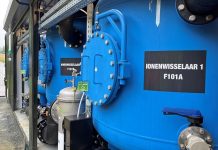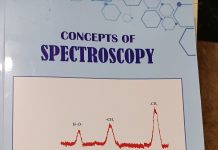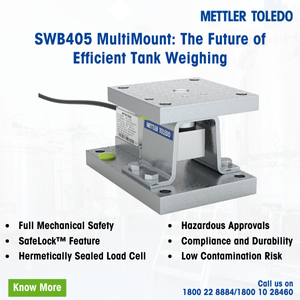Delta Hazop is an effective tool for identifying and assessing significant risk in operating plants. It focuses on the subtle and creeping changes that inevitably accumulate in a process plant over the course of time, rather than only examining the design from a singular starting point.
Hazop Study is the most widely used tool for risk identification and assessment in the chemical process industry. It consists of a systematic and highly structured examination of P&I diagrams and other related documents. The brainstorming methodology uses a set of “Guide Words” to discover lacunae in the design and is helmed by an experienced study leader. Hazop Study is carried out during various stages in the lifecycle of a plant facility, and is often a mandatory requirement by the regulatory authorities. Hazop produces a comprehensive list of potentially hazardous scenarios and identifies safeguards to manage the risk.
Management of Change
After the plant has been successfully started up, various kinds of changes are implemented during the course of its lifetime. There could be hardware additions or modifications to improve the plant performance or efficiency. There could be changes in operating parameters with the same objective in mind. There could be modifications to produce a new grade of product. There could be changes to improve the plant reliability. Changes in operating staff are also very common. A good company will implement these changes through a “Management of Change” (MOC) protocol. MOC protocol examines the change holistically and addresses all the implications in the related areas. A robust MOC protocol is an important element of Process Safety Management. However, it is important to recognise that the number of changes in an operating plant can be so overwhelming that for the sake of production expediency, some changes do manage to elude the MOC net.
Creeping Changes
It is not possible to capture some kinds of changes in the MOC system. These are very subtle and happen very slowly during the lifetime of the plant. For example, due to regular wear and tear, a pump or compressor will start operating at a different points on the performance curve. Or the changes in the performance of a control valve due to hysteresis. We should recognise and accept that changes do occur in a process plant even without actively implementing them. These subtle and creeping changes, though infinitesimally small, will be cumulatively significant to make a difference.
Re-Do Hazop
It is a customary practice to repeat the Hazop after every five years. This is also legally mandated in many countries. This revalidation of Hazop, usually referred to as “Re-Do Hazop”, essentially addresses the changes that have happened in the previous years. The Re-Do Hazop requires the same level of planning and documentation as the first Hazop. As the team makes its way through the Guide Words, new findings are frequently checked against the original Hazop report. Often times, Re-Do Hazops are not done from scratch, but as a selective revision of the original Hazop. Experience has shown that repetition of the Hazop during the lifecycle of a plant gives diminishing returns. ExxonMobil has analysed the data from its Hazop for various refinery units over four cycles. The number of risks discovered in the 2nd Hazop cycle was 15-20% of that discovered in the initial Hazop. The risks uncovered in the Hazops further down the lifecycle fell precipitously, with the number of discoveries in the 4th cycle being 5-15% of that resulting from the 2nd cycle. The same structured “Guide Words”- led examination fails to identify many significant new issues. Having the previous Hazop report on the table probably induces a strong bias and thwarts new line of probing. The team could also be lulled into a sense of complacency and may approach the exercise more perfunctorily than they ought to. This is where Delta Hazop comes in.
Delta Hazop
Delta Hazop approaches risk assessment in an entirely different way from conventional Hazop. To begin with, the exercise does not use any Guide Words. Delta Hazop focuses on the evidence for what has changed. It also lays great emphasis on the creeping changes that have eluded the MOC system. Among the many items that would be reviewed during the Delta Hazop are: Management of Change documents, site-wide changes, staff level changes, regulatory changes, changes in industry or company standards, audit and inspection reports, near-miss reports and incident investigations. Whereas the conventional Hazop focuses on design aspects to identify hazards, Delta Hazop concentrates on plant operating data. For example, an increase in the number of alarms activated is a key concern. Recurrence of near-misses in same or similar areas provides another useful input for Delta Hazop. Demands on safety systems is yet another valuable set of data. By dwelling more on the fuzzy areas of plant operation, Delta Hazop improves the chances of identifying hazards that would evade a conventional Re-Do Hazop. It also improves the understanding of the risk level of these hazards.
Applicability
Delta Hazop has certain pre-requisites. It requires that at least one “Utilisation Stage” Hazop has been carried out before. “Utilisation Stage” Hazop is done after the plant has been put into operation, as opposed to “Development Stage” Hazop which happens before plant construction. The “Utilisation Stage” Hazop provides the baseline for Delta Hazop. Further, the “Utilisation Stage” Hazop should have been of high quality, carried out by a representative team having adequate experience. Any significant process safety incident since the last Hazop is viewed as an indicator of the potential weakness of the earlier Hazop, in which case a Delta Hazop will not be the appropriate technique. Also, all the concerns flagged in the original Hazop should have been closed.
Documents
The team members for a Delta Hazop are essentially the same as that for a conventional Hazop. However, they need to have very good operating experience of the unit under consideration and should be able to identify and analyse subtle and creeping changes. The study leader needs to spend much more time collecting various data and documents for Delta Hazop than in a conventional Hazop. Besides the standard documents required for carrying out a conventional Hazop, Delta Hazop requires some very specific change related information. Particularly important is to identify changes that have bypassed the MOC system. The changes in staffing levels including the competency matrix for different roles would be reviewed. The organisation’s capability to safely operate the plant and to respond to an emergency would be scrutinised. Often times, the regulations and standards would have changed compared to the time when the plant was designed and constructed. These changes would be reviewed to reassess the risk levels and see if anything can be done differently now.
Epilogue
Delta Hazop is emerging as an effective tool for risk identification and assessment in operating plants. It is not a substitute for traditional Hazop, but a complement.
Readers’ responses may be sent to:
k.sahasranaman@gmail.com or
chemindigest@gmail.com































